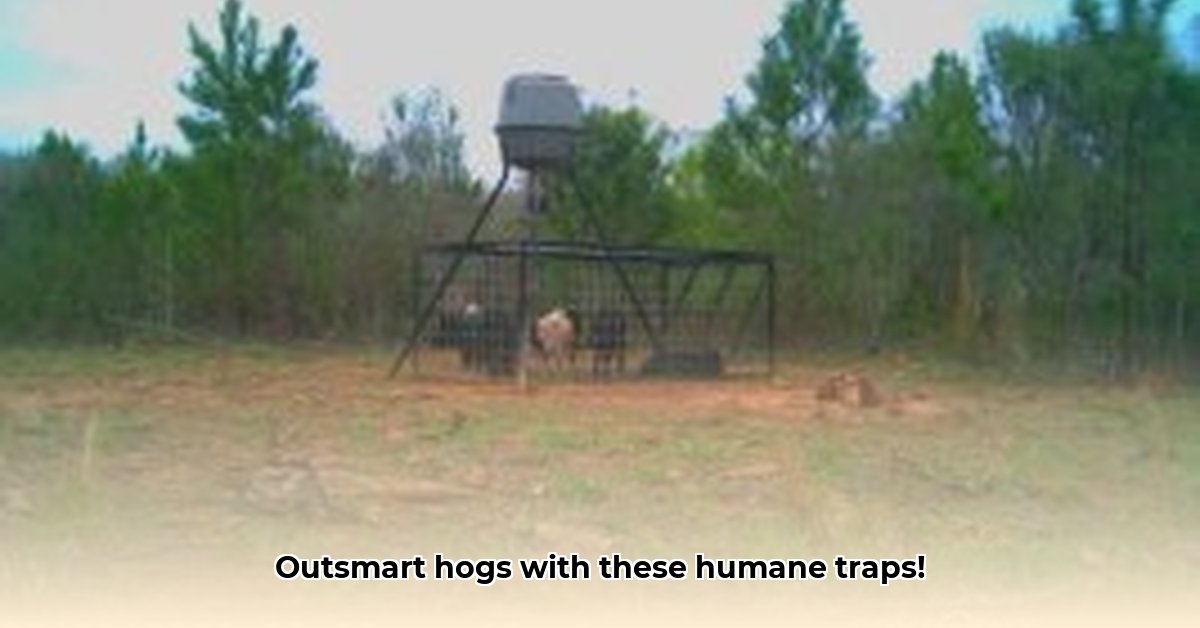
Dealing with wild hogs damaging your crops or property is a significant challenge for many farmers. While lethal methods exist, humane live trapping offers a viable alternative, and Tractor Supply Company provides a range of suitable traps. For additional pest control options, check out Tractor Supply pest control. This guide examines the effectiveness, cost, legal considerations, and environmental impact of using live traps from Tractor Supply for hog control, emphasizing sustainable and responsible practices.
How Live Hog Traps Work
Tractor Supply offers various live traps suitable for capturing different-sized animals, including hogs. These typically consist of a sturdy cage with a trigger mechanism. A hog enters, triggering the mechanism and closing the door. The design prevents escape. The success hinges on effective bait selection. Hogs are attracted to strong-smelling foods. Spoiled sweet corn or other tempting options (depending on location and season) often prove effective.
Setting Up Your Trap: A Step-by-Step Guide
- Site Selection: Identify areas where hogs frequently travel or feed. Look for tracks, rooting patterns, or trails near water sources.
- Bait Placement: Choose a bait attractive to hogs in your region. Experiment to find what works best. Use enough bait to lure them in without attracting unwanted animals.
- Trap Setup: Follow the manufacturer's instructions carefully. Ensure the trap is stable and secure on level ground, preventing tipping or accidental disturbances.
- Regular Monitoring: Check the trap daily (or more frequently, depending on local regulations) to minimize stress on captured animals and address any malfunctions immediately.
- Safety Precautions: Always wear heavy-duty gloves when handling traps and captured hogs due to potential injury.
Effectiveness & Limitations of Live Hog Traps
While effective for some animals, the success rate with large hogs can vary. Factors influencing capture rates include trap type, bait effectiveness, weather conditions, and individual hog behavior. Comprehensive research specifically on the effectiveness of Tractor Supply traps for hogs is limited, highlighting the need for more rigorous studies. This lack of data necessitates a cautious approach and diligent monitoring. Does the inherent variability in success rates make this a reliable, long-term solution?
Cost & Scalability: A Long-Term Perspective
The cost-effectiveness of live trapping depends on factors such as the size and number of traps required, bait expenses, and labor time for monitoring. For smaller infestations or properties, live trapping can be a cost-effective, humane alternative. However, for large-scale hog problems, the costs escalate rapidly, making other methods potentially more economically viable. The limited capture capacity of individual traps poses a scalability challenge for large-scale operations. How can farmers effectively balance cost and humane practices when dealing with widespread hog infestations?
Legal and Environmental Considerations: Responsible Hog Control
Before engaging in hog trapping, thoroughly research and understand local, state, and federal laws and regulations. These vary significantly by region. Failing to comply can result in legal penalties.
Beyond legality, consider environmental impacts. While live trapping is generally considered more humane than lethal methods, the stress on the captured animals and potential disruption to the ecosystem due to relocation remain crucial considerations. Relocating hogs may simply shift the problem to a neighboring area. The ethical implications of relocation versus other control measures are ongoing topics of debate and require careful consideration. What are the most responsible practices for minimizing ecological disruption while effectively managing hog populations?
Best Practices for Humane and Effective Hog Trapping
- Strategic Placement: Carefully observe hog activity patterns to place traps in high-traffic areas.
- Effective Bait Selection: Experiment with different bait types to determine what works best locally. Seasonal variations may also impact bait preferences.
- Consistent Monitoring: Regular monitoring minimizes animal suffering, allows for prompt release of non-target species and immediate action should a malfunction occur.
- Prioritize Safety: Given the potential danger, always wear appropriate protective gear when handling traps and captured animals.
- Humane Handling: Prioritize well-being during handling. Procedures should be efficient and minimize stress, regardless of whether relocation or euthanasia (as permitted by law) is selected.
Alternatives to Live Trapping and Future Directions
Live trapping is not the only method for hog control. Other strategies include fencing, repellents, and professional wildlife removal services. Each approach has its advantages and disadvantages, which should be evaluated based on specific circumstances. Ongoing research aims to develop more sustainable, humane, and effective hog control methods, including advancements in trapping technology and innovative deterrents.
Conclusion: A Balanced Approach to Sustainable Hog Control
Live hog traps from Tractor Supply offer a potentially humane alternative to lethal methods, but success depends on responsible use and careful consideration of several factors. Understanding local regulations, prioritizing animal welfare, and employing best practices are crucial for effective and ethical hog population management. While offering a humane alternative, they are not a perfect solution and more research is needed on long-term effectiveness and scalability. Choosing the most appropriate method for managing hog populations requires careful consideration of cost, ethics, and ecological impact.